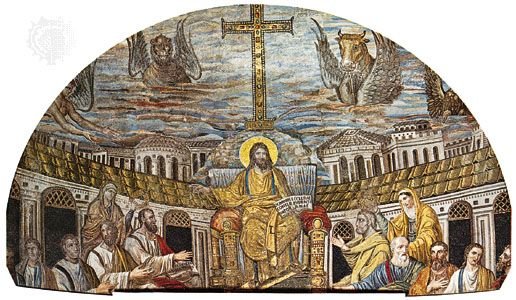The Bible is a book full of symbolism and metaphors, and one of the common tools mentioned in several passages is the awl. Many readers may wonder what an awl is and how it holds significant importance in the biblical context. In this section, we will explore the awl’s biblical reference and its use in various biblical stories and laws.
Key Takeaways:
- The awl is a tool mentioned in several biblical passages.
- Understanding the usage and symbolism of the awl in the Bible can provide valuable insights into various biblical stories and laws.
Table of Contents
The Meaning of Awl in the Bible
The awl is a tool that is mentioned in several biblical stories and laws. While it may seem like a minor detail, the awl holds profound symbolic and metaphorical significance in the Bible. By examining its references in different verses and stories, we can uncover its specific meaning in the biblical context.
One interpretation of the awl in the Bible is that it represents punishment and discipline. This can be seen in passages such as Deuteronomy 15:17: “Then take an awl and push it through his earlobe into the door, and he will become your servant for life.” This verse describes a situation where a servant chooses to serve his master for life, and to symbolize this commitment, the servant’s ear is pierced with an awl.
Another interpretation of the awl is that it represents craftsmanship and skill. In Exodus 35:35, it is said that God gave certain artisans “the ability to teach others. He has filled them with skill to do all kinds of work as engravers, designers, embroiderers in blue, purple and scarlet yarn and fine linen, and weavers—all of them skilled workers and designers.” The mention of “engravers” could be a reference to the use of an awl in engraving designs on metal or wood.
Overall, the meaning of the awl in the Bible is multifaceted and can be interpreted in various ways, depending on the context of the passage. Its symbolic significance highlights themes of punishment, discipline, craftsmanship, and skill. This shows how even the smallest details in biblical stories and laws can hold profound spiritual and metaphorical implications.
The Use of Awl in Biblical Narratives
The awl is mentioned in several biblical narratives, where it is used as a tool to accomplish various tasks. It appears primarily in the Old Testament, where its importance is rooted in its symbolism and the central role it holds in certain stories.
The Awl in the Construction of the Tabernacle
In the book of Exodus, the awl is used in the construction of the Tabernacle, the portable sanctuary that served as God’s dwelling place during the Israelites’ journey through the desert. The awl is used to make holes in the boards that form the Tabernacle’s structure and to fasten them together with cords. This symbolizes the bonding of God’s people and their devotion to his will, as well as the importance of skill and craftsmanship in carrying out his commands.
Awl in Divine Punishment
In the book of Deuteronomy, an awl is used to carry out divine punishment. If a Hebrew slave chooses to remain in servitude despite the opportunity to be released after six years, their owners may hold them accountable by taking them to the doorpost and piercing their ear with an awl. The act of piercing the ear serves as a public declaration of the slave’s lifelong commitment to their owner and a reminder of the consequences of disobedience.
Awl as a Prophetic Symbol
The prophet Jeremiah also mentions the awl in a symbolic context. In Jeremiah 18:1-6, God instructs Jeremiah to go to the potter’s house to witness the potter at work. The awl is used to shape the clay into the desired form, representing God’s capacity to shape and mold humanity as the potter molds the clay. The awl symbolizes divine inspiration and guidance necessary to mold human nature in accordance with his will.
“Can I not do with you, Israel, as this potter does?” declares the Lord. “Like clay in the hand of the potter, so are you in my hand, Israel.” – Jeremiah 18:6
The awl’s use in the creation of the Tabernacle, in divine punishment, and as symbolism in prophetic visions illustrates its significance in biblical narratives. These examples demonstrate the practical and theocratic implications of the awl in the ancient world and provide insight into its symbolic significance in biblical literature.
The Significance of Awl in Biblical Laws
The use of the awl in biblical regulations holds great importance, as it was often employed as a tool in various legal contexts. In the book of Deuteronomy, for example, the awl is mentioned in relation to the practice of releasing slaves. According to the law, if a slave chooses to stay with their master, their ear is to be pierced with an awl to signify their lifelong servitude (Deuteronomy 15:17). This practice shows the significant role the awl played in the regulation of slavery, and how it was used as a means of creating legal distinctions between individuals.
Similarly, the awl was also used in the construction of the tabernacle, which was a significant aspect of Israelite worship. In Exodus 35:35, it is stated that God gave wisdom to the craftsmen who built the tabernacle, including those who were skilled in the use of the awl. This highlights the importance of the awl in the construction of sacred spaces and objects.
Overall, the biblical significance of the awl in laws and regulations points to its role as a tool for establishing legal boundaries and distinctions, as well as its use in the construction of sacred spaces and objects.
Symbolism of Awl in the Bible
The awl, being mentioned in various narratives and laws in the Bible, holds significant symbolism and spiritual implication. The metaphorical use of the awl is linked to themes of purification and consecration, as it is often used to mark out boundaries and prepare surfaces for sacred purposes.
One notable example of the awl’s symbolic use in the Bible is in Exodus 21:6, where a slave who chooses to serve their master for life must have their ear pierced with an awl, symbolizing their permanent ownership and commitment to their master. This practice also underlines the sacred bond between God and his people, as seen in Deuteronomy 15:17: “Then take an awl and push it through his earlobe into the door, and he will become your servant for life”.
Moreover, the awl’s use in shaping and forming objects such as tent pegs, suggests its connection to the creation and design of sacred structures and tabernacles. This is apparent in the description of the tabernacle’s construction in Exodus 26, where the awl is used to fasten the curtains together and set up the framework of the structure.
Conclusion
The awl in the Bible holds significant symbolism and historical context. By understanding its meaning within the biblical narratives and laws, we can gain profound insights into the spiritual and metaphorical implications of various passages.
Through our examination of the awl’s references and usage, we have seen how it holds symbolic significance related to themes of servitude, obedience, submission, and the covenantal relationship between God and His people.
Furthermore, the awl serves as an important tool in various biblical laws and regulations, highlighting its significance in the context of biblical governance and justice.
Overall, the use of the awl in the Bible is a testament to the richness and complexity of biblical literature. By analyzing seemingly minor details such as this tool, we can gain a deeper understanding of the cultural and theological significance of biblical times.
FAQ
What is the biblical reference to the awl?
The awl is mentioned in the Bible in several narratives and laws. It is a tool that holds symbolic and historical significance within the biblical context.
What is the meaning of the awl in the Bible?
The awl carries specific meaning in the Bible. By examining its references in different verses and stories, we can uncover its symbolic and metaphorical implications within biblical texts.
In which biblical narratives is the use of the awl mentioned?
The use of the awl is mentioned in various biblical narratives. This section will analyze the specific scenes and situations where the awl is referenced, highlighting its symbolic significance within these stories.
How is the awl significant in biblical laws?
The awl also plays a role in biblical laws and regulations. It is mentioned as a tool in relation to legal matters, highlighting its significance in the context of biblical governance and justice.
What is the symbolism of the awl in the Bible?
The awl holds symbolic meaning in the Bible. By analyzing its connection to broader themes and motifs in biblical literature, we can uncover the spiritual and metaphorical implications attributed to its use.

Rockin’ the faith, one verse at a time!
Growing up, the Bible’s stories deeply impacted me. Now, with over 15 years of preaching experience, I blend timeless teachings with modern technology, making them relevant for today’s world.
Bible Hub Verse is my platform to share historical insights and thought-provoking articles, exploring both familiar and uncommon Christian topics. My passion is building a welcoming online space for everyone to learn, grow in their faith, and discover the Bible’s enduring message.
Join the journey!
God bless you.






